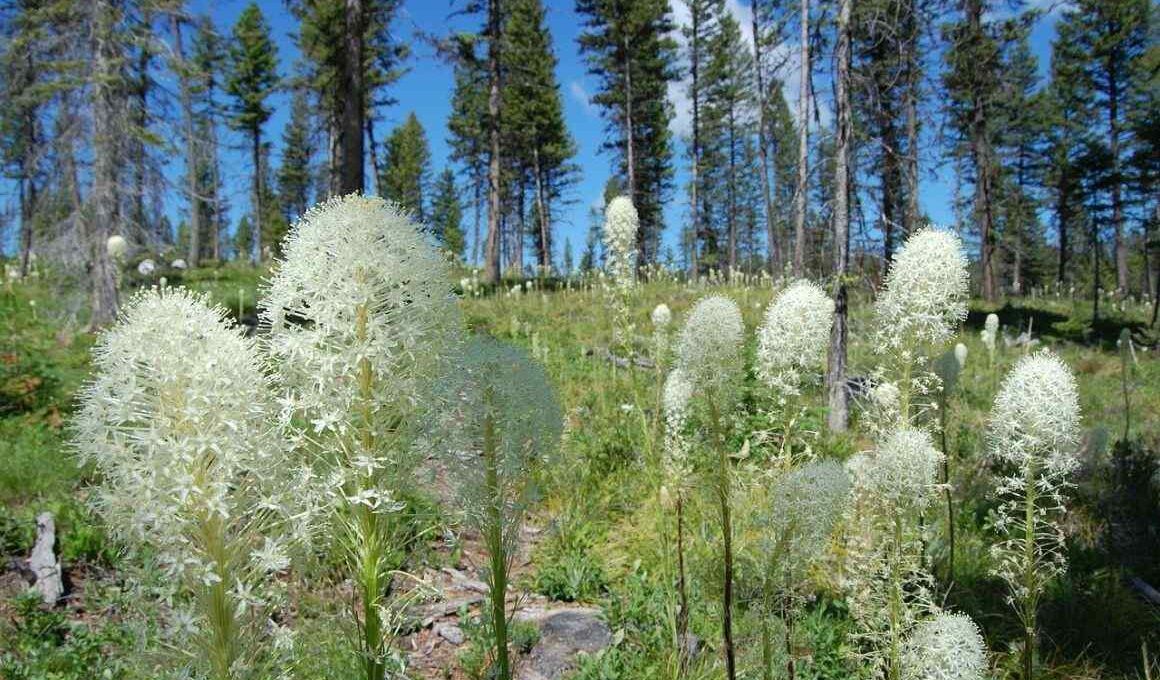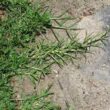Bear Grass Appearance
Bear grass (Xerophyllum tenax) also known as Indian basket grass, is an evergreen perennial from the lily family, that grows in clumps up to four feet tall and wide. It gets its common name because bears like to eat it. The white flowers are small, but they are held on tall spikes above the foliage, so they really catch your eye when they bloom in June and July. The foliage is a narrow strap-like leaf that grows in a rosette surrounding the base of the plant. The flower stalk is often dried and used as a decorative accent in floral arrangements and crafts.
Xerophyllum Tenax Habitat and Distribution
Bear Grass, also called Indian Basket grass, is an evergreen plant that grows in great abundance in the Pacific Northwest region of North America. It is found abundantly along the Canadian border, from southern California to Wyoming, and in British Columbia. It is found in woods and meadows, especially in on the western slopes of the Sierra Nevada and Cascade ranges, as well as the Rocky Mountains.
Bear Grass Care
Bear Grass is a wonderful ornamental grass for the garden. It’s a perennial grass that grows well in outdoor settings, and it’s easy to care for with just a few basic steps.
Light and Temperature
Bear Grass, also called Indian Basket grass: zone 6 to 9 and the best temperature is about 70 to 75 degrees Fahrenheit. This plant does well in full sun or partial shade.
Soil
If you have sandy or clay soil, it’s very helpful to add some organic matter to help improve the quality of your soil before planting Bear Grass. It prefers rich, well-drained soil, but can tolerate poorer soils. It is tolerant of drought and cold, but does not do well in hot, humid conditions.
Watering
In general, this ornamental grass needs very little water once it becomes established in your garden. It is drought resistant, so you should only water it if there has not been any rain for more than ten days.
Pruning
There is no really a need for pruning. When your Bear Grass starts to droop over time (as all plants do), just cut off the flowers with scissors and place them in water to keep using them in arrangements.
Bear Grass Reproduction
The flowers are fed on by many insects, including butterflies and bees. The seeds that the insects pollinate fall to the ground and sprout in early spring. The grass also spreads underground through its rhizomes, or horizontal stems.
How to Plant Bear Grass?
Planting Bear Grass by seedlings is the best way to grow this plant. The seeds are very tiny and difficult to germinate. Bear Grass likes full sun and grows in a clustered mound. Bear Grass grows best in areas with full sun and well-drained soil. Plant the seedlings one to two feet apart and water them thoroughly. Once established, bear grass will tolerate drought conditions. The seeds need 12 to 16 weeks to germinate.
Beargrass Use
Xerophyllum tenax is a crucial component of the fire ecosystem in areas where it is indigenous. It has rhizomes that survive burning and clear the ground’s surface of dead and decaying plants. The plant flourishes as a result of burned spaces, and it is frequently among the first to develop in a burnt area. Native Americans used the long, tough leaves of the plant to weave baskets.



















